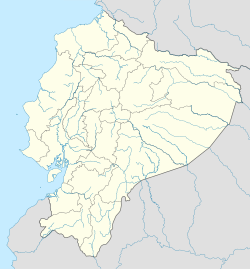History
The temple was announced by at a press conference by Gordon B. Hinckley, on behalf of the First Presidency. [1] [4] Three others were announced at the same time: the Denver Colorado, Boise Idaho, and Taipei Taiwan temples. [1] Following the announcement, the groundbreaking was not held until fourteen years later due to logistical difficulties delaying its start. [5]
During site visits for selection of the temple, Hinckley examined several potential locations. He later recounted visiting one site where trucks coming up the hill had to strain their engines, creating terrible noise. [2] The group returned to the first site they had considered, and then drove up a two-track road to the spot where the temple now stands overlooking the city. Hinckley stated he felt it was the right place. [2] They checked availability, negotiated, and purchased the site. [2]
On August 10, 1996, the groundbreaking ceremony took place, presided over by Richard G. Scott of the Quorum of the Twelve Apostles. [1] [6] This date coincided with Ecuador's independence day. [1] Although in-person attendance at the groundbreaking was limited, approximately 10,450 people listened to the proceedings via local radio in the nearby Guayaquil Coliseum. [1] During his remarks, Scott emphasized the significance and purpose of temples, explaining the difference between them and the meetinghouses which members attended each week for Sunday worship services. [4]
Before the structure in Ecuador was completed, church members would travel by bus to attend the Lima Peru Temple, a journey that took three days one way. [7] After spending one to two days at the temple, they would then travel another three days by bus to return to their homes. [7]
On August 11, 1997, Gordon B. Hinckley became the first church president to visit Ecuador when he toured the temple, which was still under construction. [8] He described to 15,000 church members how he had felt an impression to find the temple site several years earlier. [8]
Following completion of construction, the church announced the public open house that was held from June 23 to July 17, 1999, [1] where approximately 108,000 visitors toured the structure. [1] The first visitors included contractors and their families, neighbors living near the temple, and media members. [9] This included media representatives from seven television channels, a radio station, seven newspapers, and two magazines who participated in a special tour. [9] Following the media reception on June 24, church leaders hosted 470 VIPs, including prominent individuals in business and cultural affairs of Guayaquil. [9] On June 25, an additional 500 VIP visitors toured the temple. [4]
After the VIP tours, the temple doors opened to the general public. Visitors came at an average rate of 1,800 every day, except for Saturdays when attendance dramatically increased to 5,400 on June 26 and to 15,200 on July 3. [2] Among those who participated as volunteers were members of the Guayaquil Ecuador Pascuales Stake, one of the most distant and least-affluent areas in the city. [4] A group of 50 of these members arrived one night about 11 p.m. to assist with cleaning, and returned to their homes well after midnight. [9] Other faithful church members would walk six miles at night so they could arrive at the temple by 5 a.m. to begin their volunteer work of cleaning the temple, and then walk back to their homes in the evening. [10]
On July 31, 1999, the night before the dedication, approximately 22,000 members attended a regional conference held in a large soccer stadium. [1] [10] Hinckley spoke at this conference, accompanied by his wife, Marjorie. [10] Also in attendance were James E. Faust, second counselor in the First Presidency, and Russell M. Nelson, of the Quorum of the Twelve Apostles, both of whom spoke at the dedication ceremony. [1] [10] During the conference, Hinckley stated that he wanted every young man and young woman to resolve in their hearts to prepare themselves and keep themselves worthy to go to the house of the Lord. [1]
The temple was dedicated on August 1 and August 2, 1999, by Hinckley. [1] Eight dedicatory sessions were held, with approximately 11,700 members attending the sessions. [1] Among those in attendance were at least eight former mission presidents who served in Ecuador and returned for the dedication. [1] Hinckley said it was a day of history and to be remembered. [8] In the dedicatory prayer, Hinckley declared that with the completion of the temple, God had given to church members in Ecuador every blessing of the restored gospel. [4]
In 2020, like all the church's others, the Guayaquil Ecuador Temple was closed for a time in response to the COVID-19 pandemic. [11]
Design and architecture
The building has a classic modern design. [4] Designed by Rafael Vélez Calisto, of Architects & Consultants, and church architectural and engineering staff, with Roger Sears as project manager and Inmomariuxi as contractor. [4] In 2016, Caracol Radio reported that a Spanish real estate marketing company called Nuroa evaluated the Guayaquil temple to be worth US $14,456,000. [12] According to the church, the temple was described by members, non-members, and the press as “the most beautiful building in Ecuador”. [10]
The temple is on a 6.25-acre site on a hill in Urdesa, a suburb of northern Guayaquil. [1] [4] The structure is 154 feet by 76 feet, with a total floor area of 70,884 square feet. [1] [4] The exterior has Asa Branca granite panels. [1] [4] The temple has a statue of the angel Moroni on its spire. [13] [14] The temple has four ordinance rooms, three sealing rooms, and a baptistry. [1] [4]



